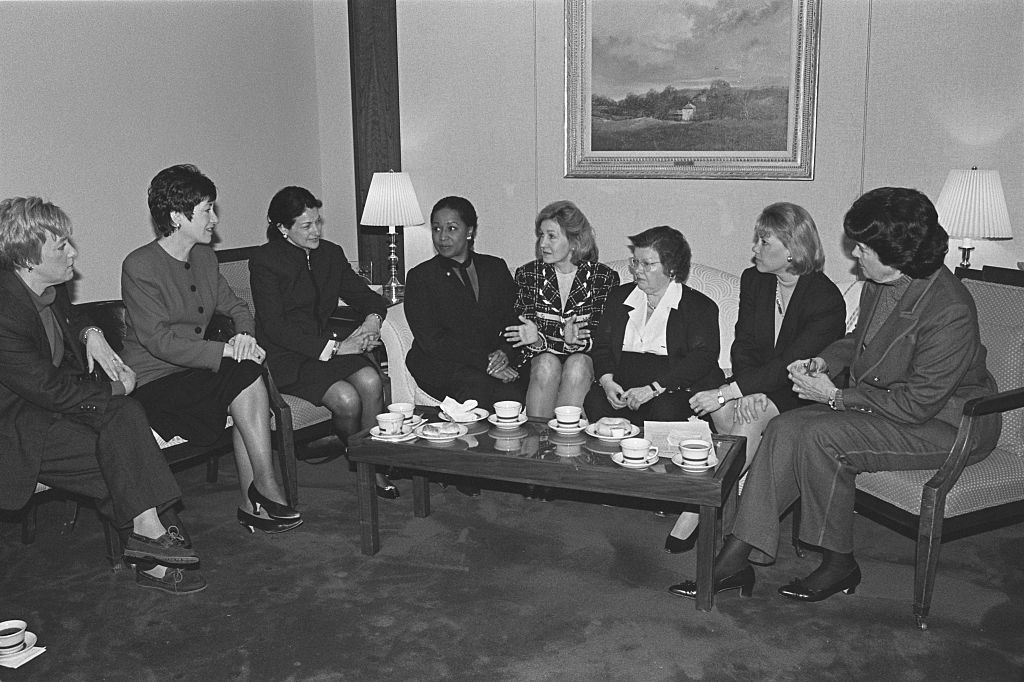Women's Rights & Issues
Related: About this forumWomen Lawmakers Have Pushed Back Against Senate Dress Codes for Decades
(Buried in this article is a comment about the reason people like cancun cruz and leningrad lindsey are objecting--they will no longer be able to stunt vote from the Senate cloakroom without ties as a protest!!)
Women Lawmakers Have Pushed Back Against Senate Dress Codes for Decades
9/25/2023 by Einav Rabinovitch-Fox

Sen. John Fetterman (D-Pa.) walks to the Senate chambers on Sept. 20, 2023. Lawmakers continue negotiations on government funding as they work to avoid a government shutdown. (Alex Wong / Getty Images)
. . . . .
********As the number of women in Congress increased, so was the need to regulate their appearance. Not surprisingly, many of the rules that were added since the 1970s targeted women’s attire. In the House, women politicians such as Shirley Chisholm (D-N.Y.), Pat Schroeder (D-Colo.) and Susan Molinari (R-N.Y.) have pushed back against convention, sporting bold-color outfits and occasionally even pantsuits. And in 2017, women members of Congress protested House rules that banned sleeveless dresses and open-toe shoes, leading a bipartisan demand for the “right to bare arms.”*********
. . . .

Women senators in 1997 (left to right): Barbara Boxer, Susan Collins, Olympia Snowe, Carol Moseley Braun, Kay Bailey Hutchison, Barbara Mikulski, Mary Landrieu and Dianne Feinstein. (CQ Roll Call File Photo)
Although the Senate did not have specific dress code that banned pantsuits for women, the willingness of Sen. Carol Moseley Braun (D-Ill.), the first Black woman to serve in the Senate, or Sen. Barbara Mikulski (D-Md.) to appear wearing trousers was seen as a rebellion, or as Mikulski put it, “a seismographic event.” Despite vocal complaints from their male colleagues, the then sergeant-at-arms, Martha S. Pope—the first woman to fulfill this role—refused to reprimand them due to the lack of specific regulations.The senators’ demand to wear pants was less about creating an alternative to the dress code, but more about wanting it to apply equally to all genders. Understanding the power of the suit, the women senators also wanted to reclaim it.The “pantsuit rebellion” as the press dubbed the debacle, eventually led Pope to update and clarify the code. Women’s “appropriate attire” was now expanded to include pantsuits and trousers, remaining vague enough to provide them with the freedom to fashion their image as they pleased. Men, however, were now required to wear only suits with ties, salvaging for themselves the only masculine look that women could not reclaim.
To be sure, even with this limited option, men senators could use their appearance to make a political statement. While not necessarily defying these directives, senators like Lindsey Graham and Ted Cruz have defiantly appeared without ties to vote from the cloakroom as a way to convey their protest.************* Indeed, it seems that their anger about the current loosening of the rules is not because of the legitimization of casualwear—a trend that has been silently happening, even in Congress—but the fact that they won’t be able to use such stunts in the future.********** And this is why the current change seems so remarkable. If women have managed to reclaim the power of the suit and make it a staple of their wardrobe, while also finding creative ways to be noticeable, male senators can now have this opportunity to use their clothes to fashion their image.
Fetterman, maybe more than any other men senator, understands the power of clothes. The casualness of his style conveys authenticity, directness, and most of all, relatability—qualities every politician desires, and which became Fetterman’s unique brand. He is not afraid to use fashion part of his political vocabulary, and now he will get a chance to do it from the floor. Dress codes might not be the most urgent matter on the Congress’ plate right now. Even Fetterman is willing to conform and wear suits in return for passing the budget. However, the attention this seemingly unimportant change has gotten, also show us why what we wear matter. Fashion allows to reclaim and adjust old conventions, as well as to rebel against them and invent new ones. We are already doing it in our homes, in our streets, and in our workplace. It is time Congress will follow suit.
https://msmagazine.com/2023/09/25/senate-dress-code/